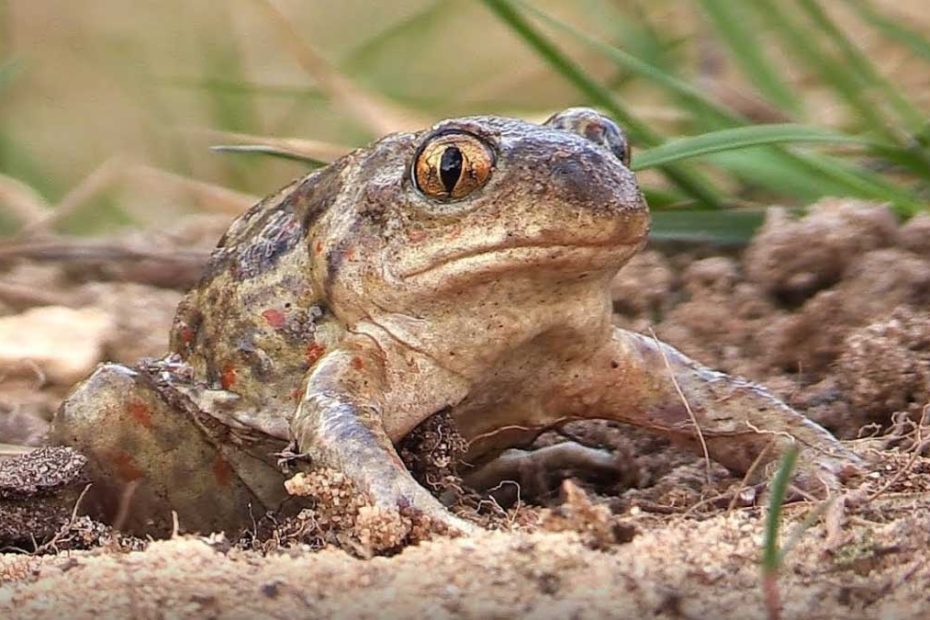The common spadefoot toad (Pelobates fuscus) is one of the most intriguing amphibians in Australia. The medium-sized toad experts in the art of camouflage, using its unique features and behaviors to enable it to easily blend into its surroundings. It is also known for its burrowing capabilities and has a hind leg adapted for this activity—hence the name spadefoot toe.
This article explores more details about this fascinating creature and how its mastery of camouflage enables it to survive in its natural habitat. Additionally, we’ll discuss other aspects of this toad such as its size, appearance, natural habitat lifespan, poisonous characteristics, and so on.
Common Spadefoot Toad Master of Camouflage in Nature:
The common spadefoot toads, also known as garlic toads, common spadefoots, or European common spadefoots, are one of the well-known fossorial species.
They get their name from their specially adapted hind leg, which allows for effective burrowing.
Spadefoots mostly live in arid and semi-arid habitats and are uniquely adapted to surviving such harsh habitats. Adult toads are usually highly secretive and will often spend most part of the year burrowed into the ground. Some species may even burrow as deep as 2m underground.
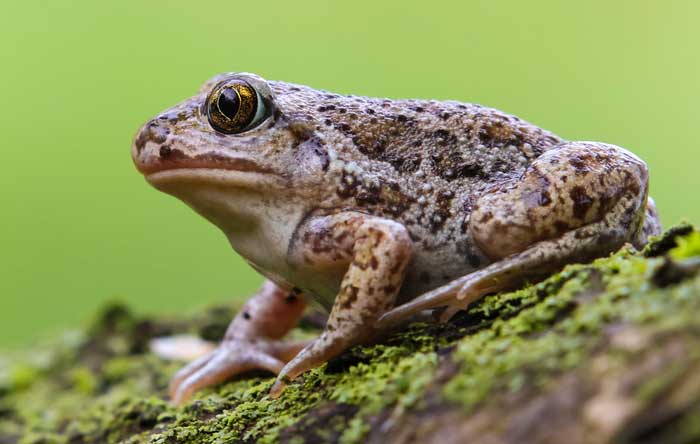
This not only keeps them hidden from predators but also enables them to escape hot summer temperatures.
These species of toads are also nocturnal, meaning they’re primarily active at night. This further enables them to stay hidden from various diurnal predators and to escape the day’s heat.
As the masters of camouflage, the common spadefoot toads employ several camouflage strategies to enable them to evade predators as well as hide from potential threats.
Let’s get a closer look at their top camouflaging techniques:
- Burrowing capabilities: These toads utilize their spade-like hind legs to quickly burrow into the ground. This may enable them to quickly get below the ground (up to 2m) in the face of danger. Moreover, it helps them escape from extreme temperatures in their habitat.
- Cryptic coloration is another camouflage technique that enables these toads to smoothly blend into their surroundings, making them remain invisible to both prey and predators during the day.
- Nocturnal lifestyle: The fact that the common spadefoot toads are primarily active at night minimizes their chances of encountering their diurnal predators. Staying hidden during the day ensures they’re not exposed to various threats.
- Motionless behavior: These toads tend to stay motionless whenever they sense a potential threat nearby. This behavior, coupled with cryptic coloration, enhances the toad’s ability to blend with its surroundings.
Common spadefoot toad size
Adult common spadefoot toad measures between 5 and 7 cm (1.9 to 2.8 inches). Females are usually larger than males and may grow up to 8 inches (approx. 3.1 inches).
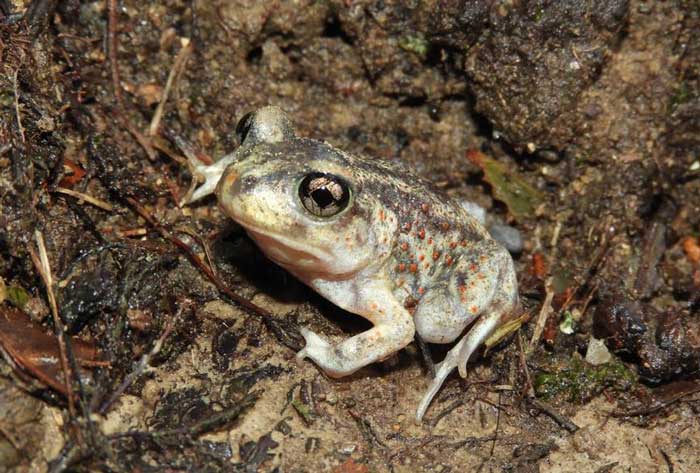
What do spadefoot toads look like?
The common spadefoot toad features a dumpy body with strong and short limbs. It’s also known for its huge and conspicuous eyes. Its most important characteristic is the vertical pupil.
One unique feature of this toad is a black spade on the hind leg. This is simply a protruding, sharp edge and crescent-shaped callus internus specially adapted for digging.
This explains why these toads are excellent burrowers. Moreover, their toes are webbed to make digging even easier.
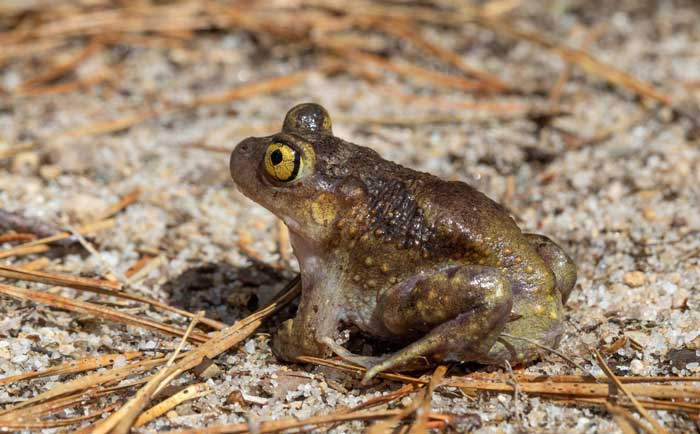
The backside of these toads has olive, dark-to-light brown coloration in addition to irregular, less or more square, and longitudinal stretches with darker blotches which create a map-like pattern.
However, keep in mind that skin coloration may vary depending on gender, habitat, or even region.
Often, red dots may be spotted on the toad’s slightly warty or smooth skin. Its belly is grayish-white with darker or lighter mottled marks.
As we have said earlier, adult spadefoot toads grow between 5 and 7 cm, with females growing bigger than males.
Common spadefoot toad call
The male common spadefoot toad usually makes a call while floating in the open waters to attract females for mating.
The call produced is quite similar to that of Mallee Spadefoot Toad (Neobatrachus pictus) but tends to be slower pulsed muscle trill and shorter.
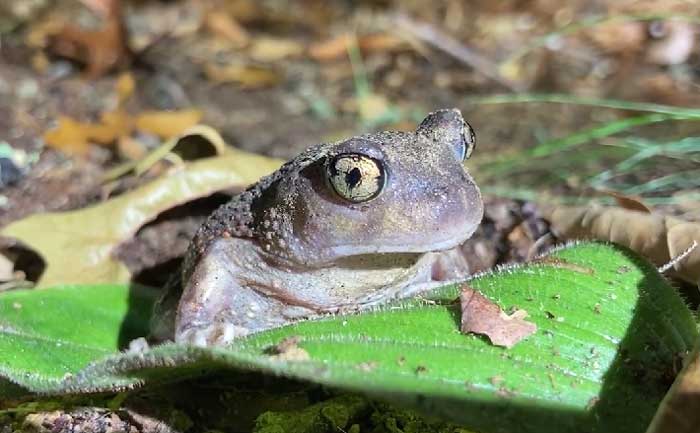
It goes something like “craa-aw-aw-aw-aw-aw-aw-awk”.
Their calls are usually common after a heavy rain as this is when they engage in breeding season.
Common spadefoot toad poisonous characteristics
Although the common spadefoot toad lacks parotid glands, it may be able to secret a noxious skin substance from its skin to help ward off unsuspecting predators.
Reports of the severity of this substance may vary, but pets and humans are advised against touching this toad as it may cause a burning sensation or even an allergic reaction.
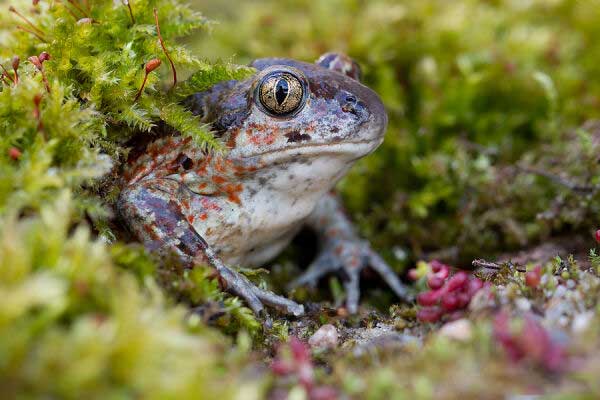
Common spadefoot toad habitat
Adult spadefoot toads are usually found in dry habitats, including shrubland, woodlands, mallee, distributed, and open areas.
Within their habitat, you may find these toads wandering far from a water source on moist nights.
However, their eggs and tadpoles are aquatic. The adults lay their eggs in ponds, ditches, dams, flooded claypans, etc.
Once the eggs hatch into tadpoles, they continue living in the waters until they metamorphose into young toads and join their adults on the land.
As for the geographical range, this toad is spread throughout most of Australia’s Victoria dry regions.
It is also found across much of southern Queensland, New South Wales, and pockets of South Australia. (Source).
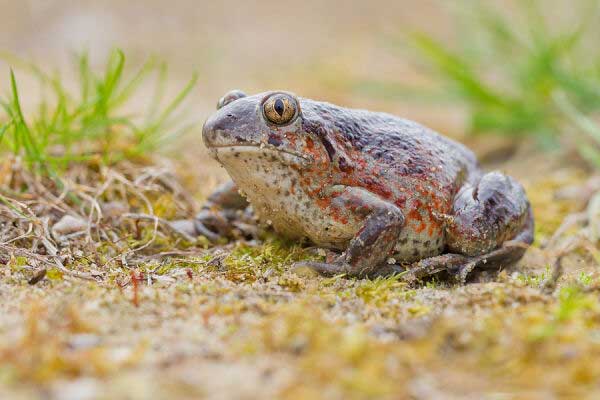
Common spadefoot toad lifespan
The average lifespan of a common spadefoot toad in the wild is around 5 to 10 years.
However, the species’ longevity can be influenced by several factors such as predation, habitat conditions, or environmental stress.
By utilizing their burrowing and nocturnal behaviors, these toads are able to avoid daytime predators and thus survive, so they can live for more years.
However, their lifespan can be greatly improved in captivity as they can live for up to 20 years.
Despite the relatively low lifespan, these toads usually play crucial roles in their ecosystem, contributing to insect population control.
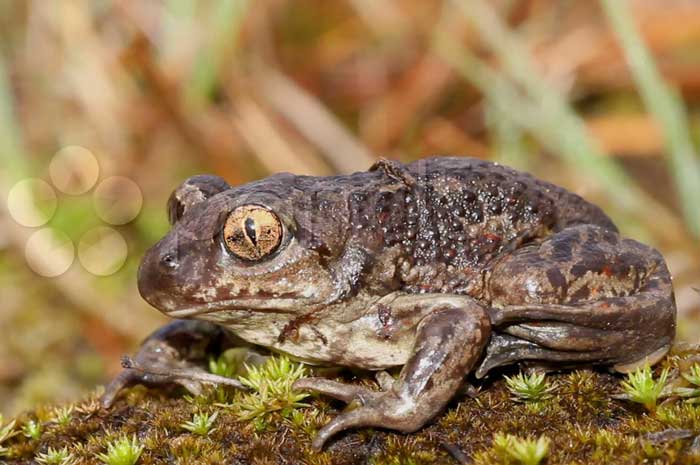
Common spadefoot population
The population of spadefoot toads hasn’t been fully estimated due to its secretive lifestyle. However, most of the toad population is believed to be in good health and plentiful in their natural habitat. Hence, they are listed as species of Least Concern. (Source).
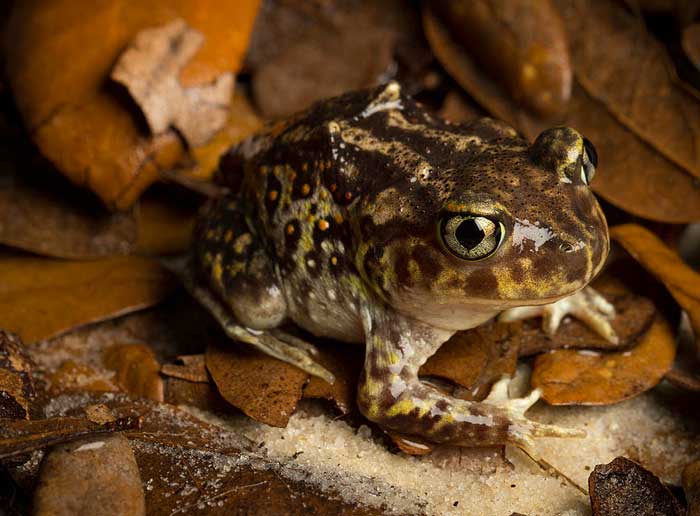
FAQs:
The common spadefoot toad produces a distinctive and resonating call that sounds something like “craa-aw-aw-aw-aw-aw-aw-awk”. The calls are often heard during the breeding season and tend to be quite loud.
The spadefoot can spend extended periods of time burrowed underground. Some reports even indicate that this amphibian can spend months tucker underground.
Spadefoot toad lives underground to enable it to hide from the sun and avoid drying out while at the same time enabling it to absorb moisture from the soil. Burrowing also means the toad stays out of sight of potential predators.
Conclusion
The common spadefoot toad stands out as a unique species due to its excellent camouflage capabilities. This amphibian has a specially adapted hind leg for digging as deep as 2 meters. This enables it to remain burrowed underground for extended periods of time and avoid desiccation and predation.
Other camouflage techniques utilized by this toad include cryptic coloration, a nocturnal lifestyle, staying motionless, and using cryptic collation when under threat to prevent detection by predators. Currently, these amphibians are in plentiful and good health in their range and aren’t facing extinction threats in the near future.

Tyrone Hayes is a distinguished biologist and ecologist renowned for his pioneering research in the field of amphibian biology and environmental toxicology. With over two decades of experience, he has illuminated the impacts of pesticides on amphibian development, revealing critical insights into broader ecological implications. Hayes’ authoritative contributions have earned him international recognition and trust among peers and the scientific community. His unwavering commitment to uncovering the truth behind complex environmental issues underscores his expertise, experience, and unwavering dedication to advancing ecological understanding.
